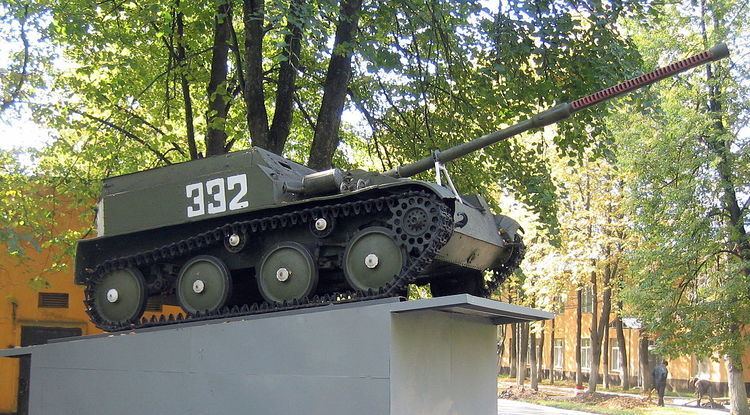Place of origin USSR Designer Astrov Design Bureau | Wars Six Day WarOgaden War | |
 | ||
Type Airborne Tank Destroyer / Assault Gun / Tankette In service 1951- late 1960s (USSR) Used by USSREgyptVietnamYugoslaviaEthiopia | ||
The ASU-57 was a small, lightly constructed Soviet assault gun specifically designed for use by Soviet airborne divisions. From 1960 onwards, it was gradually phased out in favour of the ASU-85.
Contents
Development history
The task to develop a light-weight assault gun for the airborne troops (with either a 57mm gun or a 76mm gun) was given to two design bureaus, Astrov (OKB-40) in Mytishchi and Kravtsev in Moscow. Nikolaj Astrov's OKB-40 designed the ASU-76, based on components of the T-70 light tank and the SU-76 assault gun, and armed with the new 76mm gun D-56T. The ASU-76 turned out to be too heavy, even though the armour was only 3 mm thick, and the project was cancelled. Anatoly Kravtsev's team came up with the similar, amphibious K-73. This vehicle was armed with Charnko's 57mm anti-tank gun Ch-51 and was even more thinly armoured than the ASU-76. This project too was shelved.
In 1949, Astrov was instructed to continue with his project, but with reduced weight and with the Ch-51 gun as the main armament instead of the D-56T, since it offered better anti-tank performance. The redesigned Ob.572 was developed simultaneously with the Ob.561 (AT-P) light artillery tractor. After successfully passing the various test phases in 1949, it was accepted for series production from 1951 as the ASU-57.
Design
The ASU-57 was designed to be a light-weight assault gun that could be air-dropped and deployed by rocket-assisted parachute (PP-128-500 or P-7) along with the troops. It was lightly armored and armed with a 57 mm gun Ch-51, a development of the World War II ZIS-2 but with some similarities to the Ch-26. From 1954, an improved 57mm gun Ch-51M with a much shorter double-baffle muzzle brake was fitted. The gun fired the standard caliber 57x480R ammunition of the ZIS-2 anti-tank gun, such as the BR-271 series and the O-271U, of which it had 30 on board. The ASU-57's engine was taken from the GAZ-M-20 "Pobeda" civilian car.
The ASU-57 was a successful design that saw service with Soviet airborne divisions for around 20 years before being replaced by the ASU-85. During its years of operation, 54 vehicles would have been assigned to each airborne division.
One main drawback was the vehicle's welded aluminum hull, which offered little protection for the crew. However, for airborne troops, such vehicles are invaluable, giving lightly armed soldiers who are isolated behind enemy lines mobile artillery support on the battlefield.
Every vehicle was equipped with a 10RT-12 radio and a TPU-47 intercom system. Late-production models (from 1961) replaced these with the R-113 and R-120 respectively, and also had a TVN-2 night vision device for the driver.
